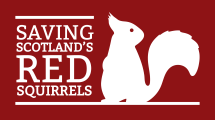…Park Authority aims to conserve and enhance the natural and cultural heritage, promote the sustainable use of the natural resources of the area, promote understanding and enjoyment (including enjoyment in the form of recreation) of the special qualities of the area by the public, and promote sustainable social and economic development of the communities of the area. Visit website … […]
Read More…
…Scotland continues to provide a home for the bulk of the country’s red squirrels, which still occurs as the sole species of squirrel over highland Scotland. Happily, the sightings also show that the native species still occupies a large area in the south of Scotland, although here they share the landscape with grey squirrels. The largest concentration of squirrel reports… […]
Read More…
…serve as refuges for red squirrels if their decline were allowed to continue. These predominantly Sitka spruce forests are not ideal habitat for red squirrels, but their very paucity can more or less exclude greys . They are also poor habitat for a range of other wildlife, so the strongholds need to be kept to restricted areas as far from… […]
Read More…
…While there is still a long way to go, the Scottish Squirrel Group is committed to the development of the new Strategy to guide the next decade of strategic actions and work towards the new ambitious 50-year vision for the recovery of red squirrels throughout Scotland. Stay tuned for further updates as the group continues this vital and important work!… […]
Read More…
…surveys per year, per volunteer, which is no small undertaking! In 2022 the north east team carried out more than 7000 feeder checks, the majority of which were carried out by volunteers. These volunteer surveys are at the very core of our operations at this stage in the eradication project, and the north east team would not have made the… […]
Read More…
…2009 to protect Scotland’s iconic red squirrels, whose populations are under threat from the spread of the invasive non-native grey squirrel. Greys outcompete red squirrels for food and living space and can carry the squirrelpox virus which does not harm them but is deadly to reds. Greys were first introduced to the UK from North America by the Victorians and… […]
Read More…
…volunteers and members of the public can keep vigilant for sick red squirrels In order to be able to do that, you’ll first need to know how to recognise the symptoms of squirrelpox disease in red squirrels. The virus produces weeping lesions around the eyes, nose, mouth, ears, feet and genitalia. Overall, the infected red squirrel will appear noticeably unwell,… […]
Read More…
…Your group’s Hub Admin can advise, or if in doubt please contact us at squirrels@scottishwildlifetrust.org.uk Does the group map show sightings from the current year? Yes, your group’s map shows sightings from the current year (starting in January), and you can filter for the years with the dropdown above the map. On the other hand, the map on the public… […]
Read More…
…attach radio collars. Trapping was carried out in the National Trust-owned woodlands immediately adjacent to the town and in the residential gardens of local volunteers. The radio-collared individuals were then regularly tracked throughout the summer and their locations recorded, to investigate how red squirrels move around the town and make use of the available resources. Alongside the live-capture trapping and… […]
Read More…
Tayside, Angus & the Mearns Successfully defending the Highland Boundary Line to protect north Scotland’s red squirrels through strategic control and monitoring Tayside, Angus & the Mearns continue to provide a home for many of Scotland’s red squirrels. However, since the 1980s grey squirrels have spread north from Perth and the Central Belt. Unfortunately, these grey squirrels not only out-compete… […]
Read More…
